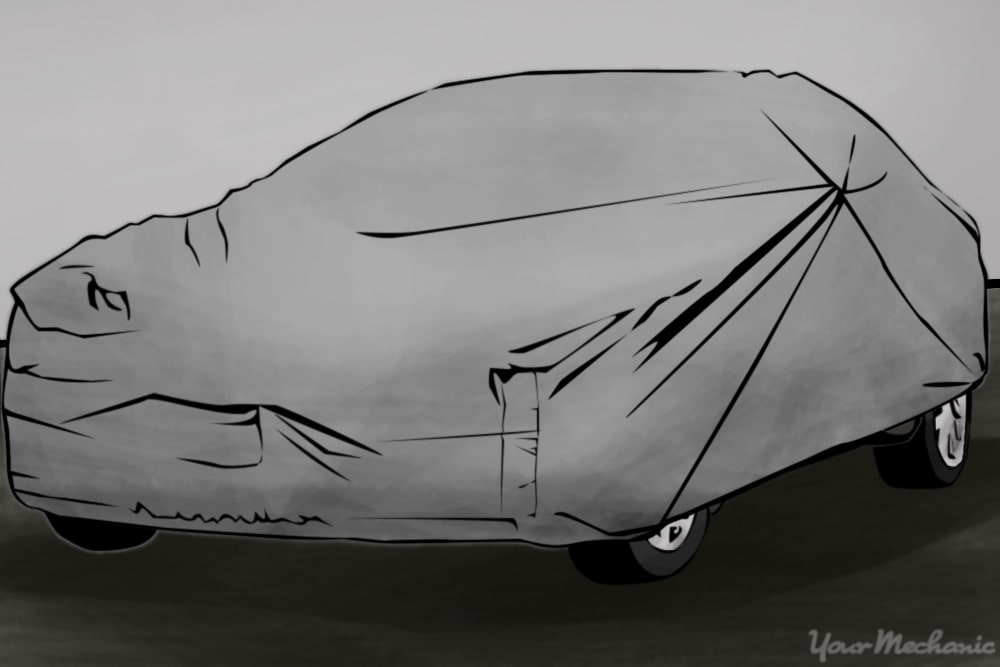

For those without the benefit of a temperature-controlled garage or other storage space for our vehicles, car covers can serve as a useful substitute to preserve both the paint and body of a vehicle. Deciding what cover to buy essentially comes down to need and cost. Cost tends to increase as a cover is more weatherproof and is made of more expensive materials. This article will break down your options and help you select the cover that works best for your needs and budget.
Part 1 of 3: Knowing the options
Perhaps the best part of buying a custom car cover is investigating the various options. Phrases like “Durable Overlapped Double-Needle Stitched Seams,” and “Reinforced Non-Scratch Grommets” can sound enticing, but knowing exactly what that means for your car and your wallet is important when considering a custom car cover.
-
Tip: This guide is meant to inform, but it can’t make the choice for you. There are a lot of companies that make custom car covers out there - you have to decide which one will work best. Consider what you are covering. For example, you may want choose a different cover for your ’97 Saturn versus your ’69 GTO.
Step 1: Decide on the cover material. Many of the more affordable car covers use some combination of polyester and polypropylene.
These materials are more cost-effective, but may not protect as well against UV rays or extreme rain and snow as more exotic materials.
As covers become more expensive, you may even see materials like fleece or flannel used to provide extra protection. Some companies may not even explain what materials exactly go into their cover, or may have created their own patented material.
Step 2: Consider whether you need an indoor cover or outdoor cover. Indoor covers typically help manage moisture that may build up and affect your car’s finish.
When buying an indoor cover, you’ll want to make sure the fabric is breathable; otherwise, moisture may build up inside the cover and cause rust.
Step 3: Decide on durability. If you have a vehicle that will be exposed to the elements, harsh sun, rain, snow or even hail, you’ll want to have a cover that is tough enough to handle the job.
Covers designed for indoor use may be ineffective when used outdoors. If you know your vehicle will be stored outdoors, you may want to consider a more durable cover.
Some covers have multiple layers to help cushion against potential nicks or dings that may occur, especially if the vehicle is kept outside.
Step 4: Determine the price you want to pay. A more expensive cover is most likely going to protect your vehicle better than a less expensive one.
As mentioned earlier, it comes down to what you’re covering and how much you have to spend. You should expect to spend more for a reliable cover that will last multiple years.
Part 2 of 3: Getting the right fit
As with so many things, there are more options when you buy online versus buying in-store. The downside of this convenience and added choice is that you won’t be sure if your cover is an exact fit until you buy it.
Step 1: Make sure you have the correct make, model, and year. Vehicles often undergo changes in length and height between model years.
For example, the 1965 Lincoln Continental was 216” long while the next model year, 1966, was 220” long and almost a full inch taller. If you accidentally buy the cover for the wrong model year, you may find the cover does not fit at snugly as it should.
Step 2: Investigate return policies. As you might be spending a significant amount, you should make sure that the company you are buying from has a good return policy just in case the cover does not fit properly.
As an example, here is a return policy and form from the California Car Cover Company.
Part 3 of 3: Comparison shopping
Comparison shopping can help you find the best deal for your vehicle. While some manufacturers exclusively sell their own brands, it is easy to find other stores that sell multiple brands.
Step 1: Know the exact name of the product you want. This will help you effectively comparison shop.
Step 2: Search for the specific cover you wish to buy online. Prices will vary between different sites, so comparing the same product could save you money.
- Tip: When buying a cover, you can consider adding optional extras like a logo, reflective piping, or a carrying case. These items may be a good value based upon your specific need.
Once you have researched and priced out the perfect cover, you should make sure it fits. A good car cover dealer will allow you to return an ill-fitting cover. You’ll want to make sure the cover fits snugly and securely around your vehicle before continuing use.
When putting a custom cover on a vehicle, you’ll want to be especially careful around any chrome pieces, or areas like mirrors which are more susceptible to damage. A cover that is put on incorrectly may cause scuffing or damage to chrome or other sensitive areas. You can save yourself time and trouble by having a friend help you cover your vehicle.
Now that you’ve got a good quality, well-fitting car cover, don’t forget to maintain it by keeping it clean so it can protect your car for many years to come.



